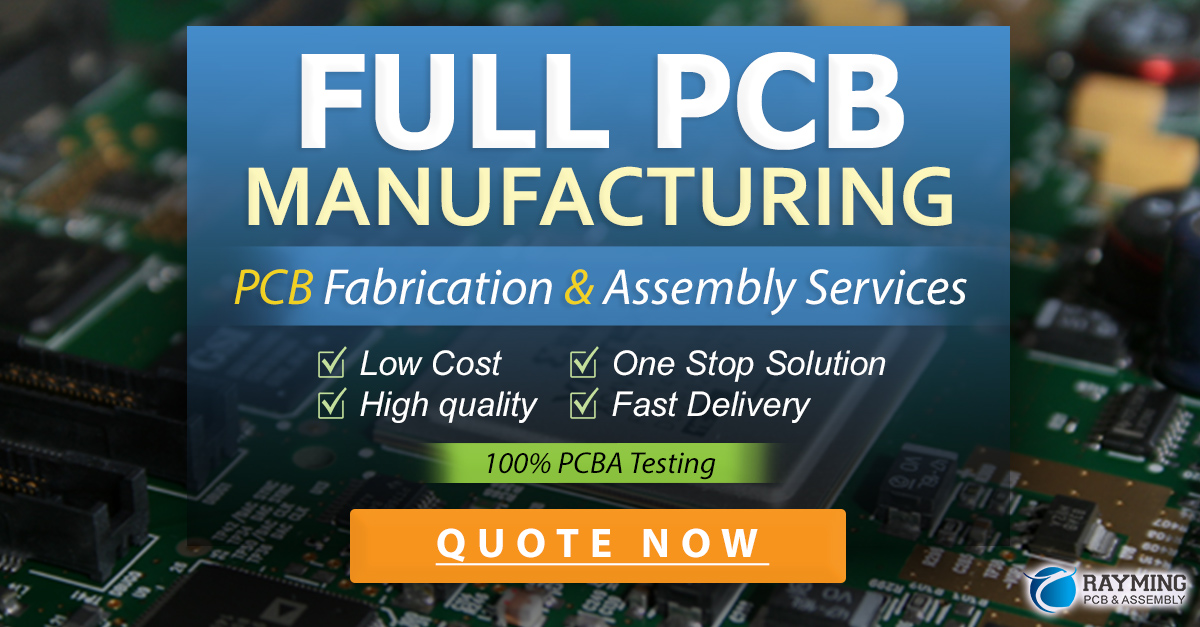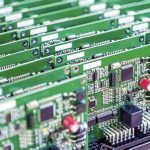What are Lifted Pads?
Lifted pads, also known as pad lifting or pad peeling, refer to a manufacturing defect where the copper pad on a PCB separates from the board’s surface. The pad, which is designed to provide an electrical connection point for components, becomes detached from the PCB substrate, leading to potential connectivity issues and compromised circuit functionality.
Types of Lifted Pads
There are two main types of lifted pads:
-
Complete Pad Lifting: In this case, the entire copper pad separates from the PCB surface, leaving no electrical connection between the component and the board.
-
Partial Pad Lifting: This occurs when a portion of the copper pad lifts off the PCB, while the remaining part still maintains some level of electrical contact. Partial pad lifting can be more challenging to detect and may lead to intermittent connectivity issues.
Causes of Lifted Pads
Several factors can contribute to the occurrence of lifted pads on PCBs:
1. Improper PCB Design
One of the primary causes of lifted pads is inadequate PCB design. Some design-related factors that can lead to pad lifting include:
-
Insufficient Pad Size: If the copper pad is too small for the component’s lead or pin, it may not provide enough surface area for a strong bond, increasing the risk of pad lifting.
-
Incorrect Pad Shape: Non-circular or irregularly shaped pads can create stress concentration points, making them more susceptible to lifting.
-
Inadequate Copper Thickness: If the copper layer on the PCB is too thin, it may not have the necessary mechanical strength to withstand the stresses during component assembly and use.
2. Manufacturing Process Issues
Problems during the PCB manufacturing process can also contribute to lifted pads:
-
Overetching: If the etching process, which removes unwanted copper from the PCB, is not properly controlled, it can lead to over-etching of the pads, reducing their size and weakening their adhesion to the substrate.
-
Contamination: Presence of contaminants, such as dust, grease, or chemical residues, on the PCB surface during manufacturing can interfere with the bonding between the copper pad and the substrate.
-
Improper Lamination: Uneven or insufficient lamination pressure during the PCB fabrication process can result in weak bonding between the copper layer and the substrate, increasing the likelihood of pad lifting.
3. Assembly and Handling Errors
Lifted pads can also occur due to issues during the PCB Assembly process or improper handling:
-
Excessive Soldering Temperature: Applying too much heat during the soldering process can cause the copper pad to expand and contract, leading to stress and potential lifting.
-
Mechanical Stress: Rough handling, bending, or twisting of the PCB during assembly or use can put excessive stress on the pads, causing them to lift off the surface.
-
Incorrect Component Placement: Misaligned or improperly seated components can put uneven stress on the pads, increasing the risk of lifting.
Prevention of Lifted Pads
To minimize the occurrence of lifted pads, several preventive measures can be implemented:
1. Robust PCB Design
Ensuring a well-designed PCB is crucial for preventing lifted pads:
-
Appropriate Pad Size and Shape: Design pads with sufficient size and circular shape to provide a strong bond and reduce stress concentration points.
-
Adequate Copper Thickness: Specify an appropriate copper thickness based on the current carrying requirements and mechanical stability needs of the PCB.
-
Proper Pad-to-Hole Ratio: Maintain a suitable ratio between the pad size and the hole size to ensure a strong mechanical connection.
2. Controlled Manufacturing Process
Strict control over the PCB manufacturing process can help prevent lifted pads:
-
Precise Etching: Implement tight process controls to avoid over-etching and ensure consistent pad sizes.
-
Cleanliness: Maintain a clean manufacturing environment to minimize contamination on the PCB surface.
-
Optimal Lamination: Ensure proper lamination pressure and temperature to achieve strong bonding between the copper layer and the substrate.
3. Careful Assembly and Handling
Following best practices during PCB assembly and handling can reduce the risk of lifted pads:
-
Controlled Soldering: Use appropriate soldering temperatures and techniques to avoid excessive heat stress on the pads.
-
Gentle Handling: Handle PCBs with care, avoiding unnecessary bending or twisting that can put stress on the pads.
-
Proper Component Placement: Ensure accurate placement and seating of components to distribute stress evenly across the pads.

Detection and Inspection of Lifted Pads
Detecting lifted pads is crucial for ensuring the quality and reliability of PCBs. Several methods can be employed for inspection:
1. Visual Inspection
Visual inspection is the most basic method for detecting lifted pads. This involves carefully examining the PCB surface for any signs of pad separation or lifting. However, visual inspection may not be reliable for detecting partial pad lifting or lifted pads hidden under components.
2. Automated Optical Inspection (AOI)
AOI systems use high-resolution cameras and image processing algorithms to detect lifted pads and other PCB defects. These systems can quickly scan the entire PCB surface and identify any anomalies, including complete or partial pad lifting.
3. X-Ray Inspection
For PCBs with multi-layered structures or hidden lifted pads, X-ray inspection can be utilized. X-ray systems can create detailed images of the internal layers of the PCB, allowing the detection of lifted pads that may not be visible from the surface.
4. Electrical Testing
Electrical testing methods, such as continuity testing or impedance testing, can help identify lifted pads by detecting changes in electrical characteristics. These tests can reveal open circuits or increased resistance caused by lifted pads.
Repair Techniques for Lifted Pads
When lifted pads are detected on a PCB, there are several repair techniques that can be employed depending on the severity and location of the lifting:
1. Solder Mask Repair
For minor pad lifting, where the copper pad is still partially attached to the PCB, solder mask repair can be attempted. This involves applying a small amount of solder mask material to the lifted area and curing it to re-establish the bond between the pad and the substrate.
2. Epoxy Bonding
Epoxy bonding is another method for repairing lifted pads. A specialized epoxy adhesive is applied to the lifted pad and cured to create a strong bond between the pad and the PCB surface. This technique can be effective for both complete and partial pad lifting.
3. Pad Replacement
In cases where the lifted pad is completely detached or severely damaged, pad replacement may be necessary. This involves removing the damaged pad and installing a new copper pad in its place. Pad replacement requires skilled manual work and is typically reserved for critical repairs.
4. Jumper Wire Repair
For lifted pads that cannot be repaired using the above methods, jumper wire repair can be a viable option. This involves connecting a small wire between the lifted pad and a nearby stable connection point to maintain electrical continuity. Jumper wire repair is often used as a temporary solution until a more permanent repair can be performed.
Table: Comparison of Lifted Pad Repair Techniques
| Repair Technique | Applicability | Complexity | Effectiveness |
|---|---|---|---|
| Solder Mask Repair | Minor pad lifting | Low | Moderate |
| Epoxy Bonding | Complete or partial pad lifting | Moderate | High |
| Pad Replacement | Completely detached or severely damaged pads | High | High |
| Jumper Wire Repair | Unrepairable lifted pads | Moderate | Temporary |
Frequently Asked Questions (FAQ)
-
Q: Can lifted pads cause complete circuit failure?
A: Yes, lifted pads can lead to complete circuit failure if they result in open circuits or loss of electrical connectivity between components and the PCB. -
Q: Are lifted pads more common in certain types of PCBs?
A: Lifted pads can occur in any type of PCB, but they are more prevalent in high-density designs with small pad sizes and fine pitch components. -
Q: Can lifted pads be prevented entirely?
A: While it is not possible to completely eliminate the occurrence of lifted pads, following proper design guidelines, controlling the manufacturing process, and handling PCBs with care can significantly reduce their likelihood. -
Q: Is it always necessary to repair lifted pads?
A: The decision to repair lifted pads depends on the severity of the lifting and the criticality of the affected circuit. Minor pad lifting may not always require repair, but complete pad detachment or lifting in critical signal paths should be addressed. -
Q: Can lifted pads be repaired multiple times?
A: While lifted pads can be repaired, repeated repairs on the same pad may degrade its integrity and reliability. If a pad undergoes multiple lifting and repair cycles, it may be necessary to consider a more permanent solution, such as pad replacement.
Conclusion
Lifted pads are a common issue in PCB manufacturing and assembly that can compromise the quality and functionality of electronic circuits. Understanding the causes, prevention methods, and repair techniques for lifted pads is essential for ensuring the reliability and longevity of PCBs.
By implementing robust PCB design practices, controlling the manufacturing process, and handling boards with care, the occurrence of lifted pads can be minimized. When lifted pads do occur, various repair techniques, such as solder mask repair, epoxy bonding, pad replacement, and jumper wire repair, can be employed depending on the severity and location of the lifting.
Regular inspection and testing of PCBs using visual examination, automated optical inspection, X-ray imaging, and electrical testing methods can help detect lifted pads early in the production process, allowing for timely repairs and reducing the risk of field failures.
As technology advances and electronics become more complex, addressing the challenge of lifted pads will continue to be a critical aspect of PCB manufacturing and assembly. By staying informed about best practices and emerging techniques, engineers and technicians can effectively prevent, detect, and repair lifted pads, ensuring the quality and reliability of electronic products.






Leave a Reply